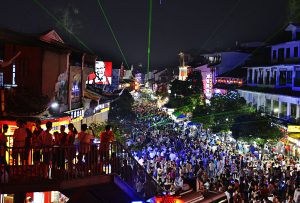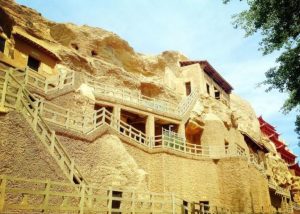 The management of Mogao Caves is still very good. Buy tickets generally in the official website one month in advance, then you can see 8 caves! If you don’t buy the ticket from the official website, you can buy an emergency ticket in Dunhuang one day in advance to see 4 caves! To tell the truth, the cave is very shocking, it is the intangible cultural heritage of the Chinese nation, but it is too little caves that allow to be viewd, only to show you a few representatives! You need to go to the museums and art galleries inside to learn more about the history and greatness of the Mogao Caves! No photos are allowed inside, and visitors are queued for half an hour for viewing a very short time during the peak season.
The management of Mogao Caves is still very good. Buy tickets generally in the official website one month in advance, then you can see 8 caves! If you don’t buy the ticket from the official website, you can buy an emergency ticket in Dunhuang one day in advance to see 4 caves! To tell the truth, the cave is very shocking, it is the intangible cultural heritage of the Chinese nation, but it is too little caves that allow to be viewd, only to show you a few representatives! You need to go to the museums and art galleries inside to learn more about the history and greatness of the Mogao Caves! No photos are allowed inside, and visitors are queued for half an hour for viewing a very short time during the peak season.
Inside the grotto it is a statue of Maitreya, which is the world’s largest indoor cross-legged sitting statue, so people call it the “Big Buddha Temple.” This statue has many feminine characteristics, which is similar to the giant Buddha of Lucerne, which shows the king’s character in the Longmen Grottoes of the same era!
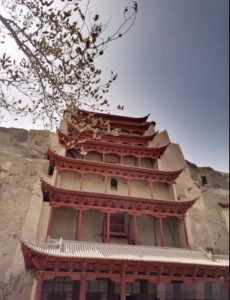
The shape of the top of the cave changed with the dynasty. Before the Sui Dynasty, the figure was covered with human figures. The algae appeared in the Tang Dynasty, giving people lofty and profound sense. The algae well in the Xixia Cave also revealed to us the matriarchal social style of the Femdom. The pattern of Mogao Caves has become the favorite of scarves design, even the women who pursue the Hermes brand are convinced! The most moving part of the mural is undoubtedly the image of the flying Apsaras. Most of them are naked for upper body, and showed plump chest, long waist and curve body lines; some play flute, some hold lotus, some dress clothes, and it can be said that the sky is flying and full of wind!
The current visit process of Mogao Caves is to go to the Digital Display Center first and then take the bus into the cave area. From the city to the digital display center, you can take the green bus diagonally opposite the Silk Road Yiyuan Hotel. When you come back, you can take the bus back to the digital center from the cave area and return by taking the green bus.
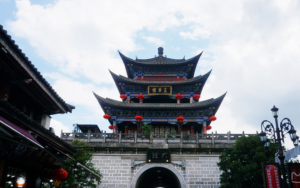 On the streets of the Dali Ancient Town, people come and go, and almost every store in every street, there is a lot of visitors. However, the downside is that every street, or the next street in the corner, it is too repeatable. You can see a lot of flower cake shops, the jewelry stores, the clothing store selling the same clothes, the tea shop selling the same tea; and a lot of restaurants, which are really repeatable. There are also many taverns where folk singers are resident.
On the streets of the Dali Ancient Town, people come and go, and almost every store in every street, there is a lot of visitors. However, the downside is that every street, or the next street in the corner, it is too repeatable. You can see a lot of flower cake shops, the jewelry stores, the clothing store selling the same clothes, the tea shop selling the same tea; and a lot of restaurants, which are really repeatable. There are also many taverns where folk singers are resident.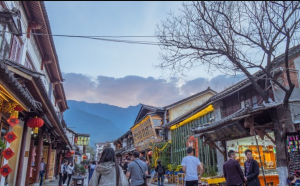
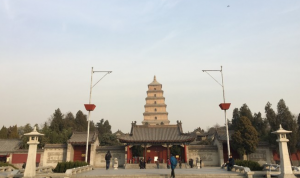 The Big Wild Goose Pagoda was presided over by the Xuan Zang Master. Although it has been vicissitudes for thousands of years, it is still intact. It is one of the famous Buddhist pagodas in China, and it is also a unique symbol of the ancient city of Xi’an. The Big Wild Goose Pagoda is a pavilion-style brick tower. The tower body is made of bricks with a square cone with a staircase spiraling up. There is a vault door in each side of each floor, and the view of Chang’an is unobstructed. On the two sides of the south gate of the pagoda, the “Da Tang Sanzang Holy Preface” monument was set by Xuanzang during the Tang Emperor’s reign, and they are well preserved. It is worth mentioning that the Tang Dynasty painters Wu Daozi and Wang Wei had made many murals for the Ci’en Temple, but unfortunately, they were already disappeared in history. However, on the stone door sills and door frames of the four-door cave under the Big Wild Goose Pagoda, there is still a beautiful Tang Dynasty line depiction.
The Big Wild Goose Pagoda was presided over by the Xuan Zang Master. Although it has been vicissitudes for thousands of years, it is still intact. It is one of the famous Buddhist pagodas in China, and it is also a unique symbol of the ancient city of Xi’an. The Big Wild Goose Pagoda is a pavilion-style brick tower. The tower body is made of bricks with a square cone with a staircase spiraling up. There is a vault door in each side of each floor, and the view of Chang’an is unobstructed. On the two sides of the south gate of the pagoda, the “Da Tang Sanzang Holy Preface” monument was set by Xuanzang during the Tang Emperor’s reign, and they are well preserved. It is worth mentioning that the Tang Dynasty painters Wu Daozi and Wang Wei had made many murals for the Ci’en Temple, but unfortunately, they were already disappeared in history. However, on the stone door sills and door frames of the four-door cave under the Big Wild Goose Pagoda, there is still a beautiful Tang Dynasty line depiction.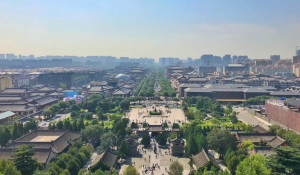
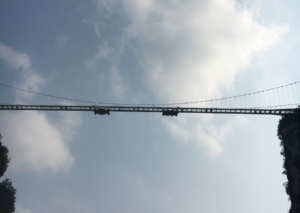 When taking a tour to Zhangjiajie, you are highly recommended to have a visit to the Zhangjiajie Grand Canyon, whose glass bridge will make your travel there unforgettable.
When taking a tour to Zhangjiajie, you are highly recommended to have a visit to the Zhangjiajie Grand Canyon, whose glass bridge will make your travel there unforgettable.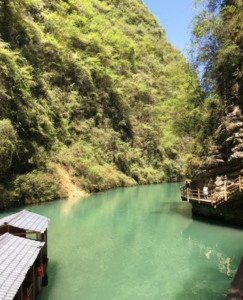 The bridge Bungy of the Grand Canyon is still under construction, and friends who like it can look forward to it. But it is not so recommended to you, because the scenery is really not the best, the scenery on the mountain is not as good as the Tianmen Mountain, Tianzi Mountain, Yangjiajie, Yuanjiajie, and the scenery of the canyon is not comparable to the Golden Whip Creek. The only thing that worthy experiencing is walking on the glass bridge. The bridge, but not scary at all, is not a full transparent glass, it should be inlaid with dozens of transparent glasses in the middle of the frosted glasses. The glass is also not very clear. Compared with the fare, the price/performance ratio is not so high, so it is the least recommended. It is said that the scenery under the bridge is completely invisible on rainy days. But if you still want to explore more there, it is also a good attraction for you.
The bridge Bungy of the Grand Canyon is still under construction, and friends who like it can look forward to it. But it is not so recommended to you, because the scenery is really not the best, the scenery on the mountain is not as good as the Tianmen Mountain, Tianzi Mountain, Yangjiajie, Yuanjiajie, and the scenery of the canyon is not comparable to the Golden Whip Creek. The only thing that worthy experiencing is walking on the glass bridge. The bridge, but not scary at all, is not a full transparent glass, it should be inlaid with dozens of transparent glasses in the middle of the frosted glasses. The glass is also not very clear. Compared with the fare, the price/performance ratio is not so high, so it is the least recommended. It is said that the scenery under the bridge is completely invisible on rainy days. But if you still want to explore more there, it is also a good attraction for you.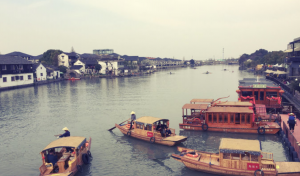 On the outskirts of Shanghai, there is a quiet and comfortable ancient town, which is called Zhujiajiao. In the morning, Zhujiajiao is the liveliest. There are restaurants selling steaming meat in the street; there are rumbling workshops selling silk quilts; there are small shops selling suave Jiangnan silk; there are bright and stylish shops selling literary tea sets, which repeats the business trajectory that comes with Jiangnan Water Town. Occasionally, there are some boat vendors selling vegetables on the shore of the bridge. You can buy some vegetables and pick up the fresh river food to cook and start a good day.
On the outskirts of Shanghai, there is a quiet and comfortable ancient town, which is called Zhujiajiao. In the morning, Zhujiajiao is the liveliest. There are restaurants selling steaming meat in the street; there are rumbling workshops selling silk quilts; there are small shops selling suave Jiangnan silk; there are bright and stylish shops selling literary tea sets, which repeats the business trajectory that comes with Jiangnan Water Town. Occasionally, there are some boat vendors selling vegetables on the shore of the bridge. You can buy some vegetables and pick up the fresh river food to cook and start a good day.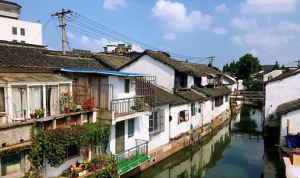
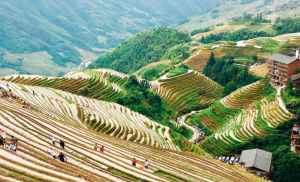 The Longji Rice terraces have been a wonder of the world with the sweat of generations by the ancestors of the Yao and Zhuang nationalities for thousands of years.
The Longji Rice terraces have been a wonder of the world with the sweat of generations by the ancestors of the Yao and Zhuang nationalities for thousands of years.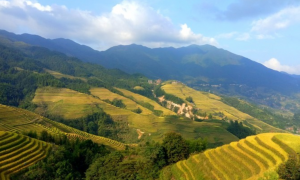 Although it is not the most beautiful season in the terraced fields, the simple rural life, the rich ethnic customs, the long history of terraced planting, the tranquility and elegance are also the experience and harvest of the journey.
Although it is not the most beautiful season in the terraced fields, the simple rural life, the rich ethnic customs, the long history of terraced planting, the tranquility and elegance are also the experience and harvest of the journey.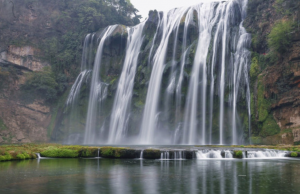 When you take a trip to Guizhou, China, the Huangguoshu Waterfall is the must-see attraction that should be included in your itinerary there.
When you take a trip to Guizhou, China, the Huangguoshu Waterfall is the must-see attraction that should be included in your itinerary there.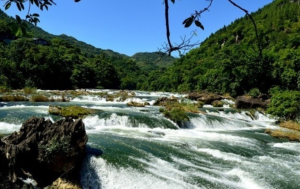
 Tiananmen Square will be cleared every night. There will be armed police patrolling around the square. There are a lot of people gathering at Tiananmen Square at two or three o’clock in the morning to wait to see the national flag rising. After the security check, the team waiting outside the west gate of the National Museum or outside the east gate of the Great Hall of the People has been lined up. When you watch the flag rising, don’t wander around at this time, and go to the queue will be your choice.
Tiananmen Square will be cleared every night. There will be armed police patrolling around the square. There are a lot of people gathering at Tiananmen Square at two or three o’clock in the morning to wait to see the national flag rising. After the security check, the team waiting outside the west gate of the National Museum or outside the east gate of the Great Hall of the People has been lined up. When you watch the flag rising, don’t wander around at this time, and go to the queue will be your choice.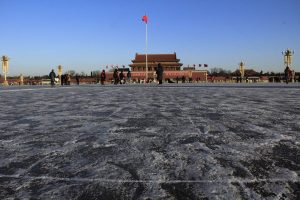 If you are slow, then you can just see the crowds around you, because the people who go to see the national flag rising every day are really a lot, you can’t see the heroic flag, you may not hear the uniform stepping sound too.
If you are slow, then you can just see the crowds around you, because the people who go to see the national flag rising every day are really a lot, you can’t see the heroic flag, you may not hear the uniform stepping sound too.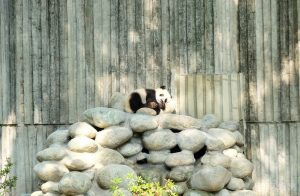 As the “Chinese cultural city” and “China’s best tourist city”, Chengdu carries thousands of years of history, and the UNESCO Creative Cities Network has awarded it the title of “Gourmet Capital”. Chengdu city attractions are more concentrated, you can spend one to two days visiting all of them. The best spots are scattered around the area, and it is more appropriate to arrange 2-4 days to explore the charm there. Dujiangyan and Qingcheng Mountain cannot be missed during your trip to Chengdu, and it usually takes 2-3 days to play there.
As the “Chinese cultural city” and “China’s best tourist city”, Chengdu carries thousands of years of history, and the UNESCO Creative Cities Network has awarded it the title of “Gourmet Capital”. Chengdu city attractions are more concentrated, you can spend one to two days visiting all of them. The best spots are scattered around the area, and it is more appropriate to arrange 2-4 days to explore the charm there. Dujiangyan and Qingcheng Mountain cannot be missed during your trip to Chengdu, and it usually takes 2-3 days to play there.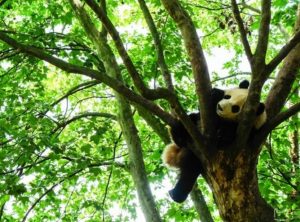
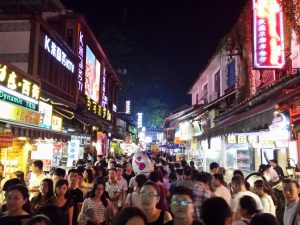 West Street is the most historic street in Yangshuo. It is also the most concentrated street for foreigners. Bars, restaurants, Internet cafes, crafts and calligraphy shops are decorated in the styles of both Chinese and Western. It is the most famous street in China.
West Street is the most historic street in Yangshuo. It is also the most concentrated street for foreigners. Bars, restaurants, Internet cafes, crafts and calligraphy shops are decorated in the styles of both Chinese and Western. It is the most famous street in China.